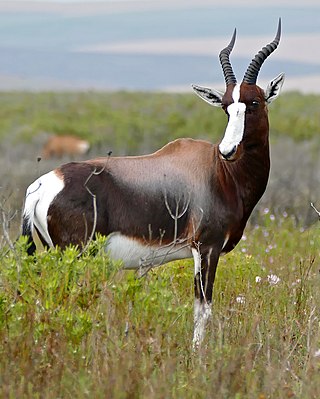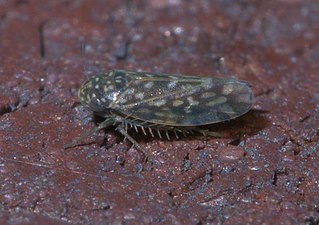
Pope Callixtus I, also called Callistus I, was the bishop of Rome from c. 218 to his death c. 222 or 223. He lived during the reigns of the Roman emperors Elagabalus and Alexander Severus. Eusebius and the Liberian catalogue list his episcopate as having lasted five years (217–222). In 217, when Callixtus followed Zephyrinus as Bishop of Rome, he started to admit into the Church converts from sects or schisms. He was killed for being Christian and is venerated as a saint by the Catholic Church.

"Mainland China", also referred to as "the Chinese mainland", is a geopolitical term defined as the territory under direct administration of the People's Republic of China (PRC) in the aftermath of the Chinese Civil War. In addition to the geographical mainland, the geopolitical sense of the term includes islands such as Hainan, Chongming, and Zhoushan. By convention, territories outside of mainland China include:

The Western Hemisphere is the half of the planet Earth that lies west of the Prime Meridian—which crosses Greenwich, London, England—and east of the 180th meridian. The other half is called the Eastern Hemisphere. Geo-politically, the term Western Hemisphere is often used as a metonym for the Americas or the "New World", even though geographically the hemisphere also includes parts of other continents.

A lima bean, also commonly known as butter bean, sieva bean, double bean or Madagascar bean, is a legume grown for its edible seeds or beans.

The subfamily Alcelaphinae, of the family Bovidae, contains the wildebeest, tsessebe, topi, hartebeest, blesbok and bontebok, and several other related species. Depending on the classification, there are 6–10 species placed in four genera, although Beatragus is sometimes considered a subgenus of Damaliscus, while Sigmoceros is sometimes considered for the Lichtenstein's hartebeest.

The common tsessebe or sassaby is the southern, nominate subspecies of Damaliscus lunatus, although some authorities have recognised it as an independent species. It is most closely related to the Bangweulu tsessebe, sometimes also seen as a separate species, less to the topi, korrigum, coastal topi and tiang subspecies of D. lunatus, and less to the bontebok in the same genus. Common tsessebe are found in Angola, Zambia, Namibia, Botswana, Zimbabwe, Eswatini, and South Africa.

Moscow Time is the time zone for the city of Moscow, Russia, and most of western Russia, including Saint Petersburg. It is the second-westernmost of the eleven time zones of Russia. It has been set to UTC+03:00 without DST since 26 October 2014; before that date it had been set to UTC+04:00 year-round on 27 March 2011.

Hinnøya (Norwegian) or Iinnasuolu (Northern Sami) is the fourth-largest island in Norway, and the largest outside the Svalbard archipelago. The 2,204.7-square-kilometre (851.2 sq mi) lies just off the western coast of Northern Norway. The island sits on the border of Nordland and Troms counties. The western part of the island is in the district of Vesterålen, the southwestern part is in the Lofoten district, the southeastern part is in the Ofoten district, and the northeastern part is in Troms. As of 2017, Hinnøya had a population of 32,688. The only town on the island is the town of Harstad. Some of the larger villages include Borkenes, Lødingen, Sigerfjord, and Sørvik. The island is split between several municipalities: Harstad, Tjeldsund and Kvæfjord in Troms county, as well as Andøy, Hadsel, Lødingen, Sortland, and Vågan in Nordland county.

UTC+03:00 is an identifier for a time offset from UTC of +03:00. In areas using this time offset, the time is three hours ahead of the Coordinated Universal Time (UTC). Following the ISO 8601 standard, a time with this offset would be written as, for example, 2019-02-08T23:36:06+03:00.

Damaliscus lunatus is a large African antelope of the genus Damaliscus and subfamily Alcelaphinae in the family Bovidae, with a number of recognised geographic subspecies. Some authorities have split the different populations of the species into different species, although this is seen as controversial. Common names include topi, sassaby, tiang and tsessebe.

The plate fish is a flounder in the genus Bothus, found in the warmer parts of the Atlantic including the Caribbean. Its typical habitat is sandy plains near coral reefs and it is able to change its colouring to make it well-camouflaged in this environment. It is sometimes known as the peacock flounder, a name also given to the closely related Bothus mancus from the Indo-Pacific.

Diachromus germanus is a species of ground beetle and the only species of the monotypic genus Diachromus.

Poecilus versicolor is a species of ground beetle native to the Palearctic. In Europe, it is found in Albania, Austria, Belarus, Belgium, Bosnia and Herzegovina, Bulgaria, Corsica, Croatia, the Czech Republic, mainland Denmark, Estonia, Finland, mainland France, Germany, Great Britain including the Isle of Man, Hungary, the Republic of Ireland, mainland Italy, Kaliningrad, Latvia, Liechtenstein, Lithuania, Luxembourg, Moldova, Northern Ireland, North Macedonia, mainland Norway, Poland, mainland Portugal, Romania, Russia, Slovakia, Slovenia, mainland Spain, Sweden, Switzerland, the Netherlands, Ukraine and Yugoslavia.

Ilybius quadriguttatus is a species of beetle native to Europe and Near East. In Europe, it is found in Austria, Belarus, Belgium, Bulgaria, Croatia, the Czech Republic, mainland Denmark, Estonia, Finland, mainland France, Germany, Great Britain including the Isle of Man, Hungary, mainland Italy, Kaliningrad, Latvia, Liechtenstein, Lithuania, mainland Norway, Poland, Romania, Russia, Slovakia, Slovenia, mainland Spain, Sweden, Switzerland, the Netherlands, Ukraine and Yugoslavia.

Gyrinus natator, the common whirligig beetle, is a species of beetle native to the Palearctic realm, including much of Europe. Its range extends northwards as far as Norway, Finland, and the Saint Petersburg area of Russia. It is an aquatic beetle and moves rapidly around on the surface or swims underwater in still or slow-moving fresh water.

Noterus crassicornis is a species of beetle native to the Palearctic and the Near East. In Europe, it is only found in Austria, Belarus, Belgium, Bosnia and Herzegovina, Bulgaria, Croatia, Cyprus, the Czech Republic, mainland Denmark, Estonia, European Turkey, Finland, mainland France, Germany, Great Britain including the Isle of Man, Hungary, the Republic of Ireland, mainland Italy, Latvia, Lithuania, Luxembourg, Moldova, Northern Ireland, North Macedonia, mainland Norway, Poland, Russia, Sicily, Slovakia, Slovenia, Sweden, the Netherlands, Ukraine and Yugoslavia.

Anthrenus museorum, commonly known as the museum beetle, is a species of beetle found in the Palearctic, the Near East and the Nearctic. In its larval form it damages all forms of dry skin and hair. The larva will also eat dry cheese, flour or cocoa occasionally. It is considered a pest, as it damages, among others, the skin of taxidermied animals, such as polar bears and big cats in museums.

Callistus Valentine Onaga, D.D., is the fifth Roman Catholic Bishop of the Diocese of Enugu.

Xestocephalus lunatus is a species of leafhopper in the family Cicadellidae.

Callistus Caravario was a Salesian priest serving in China, who along with Luigi Versiglia was martyred in China on 25 February 1930.




















